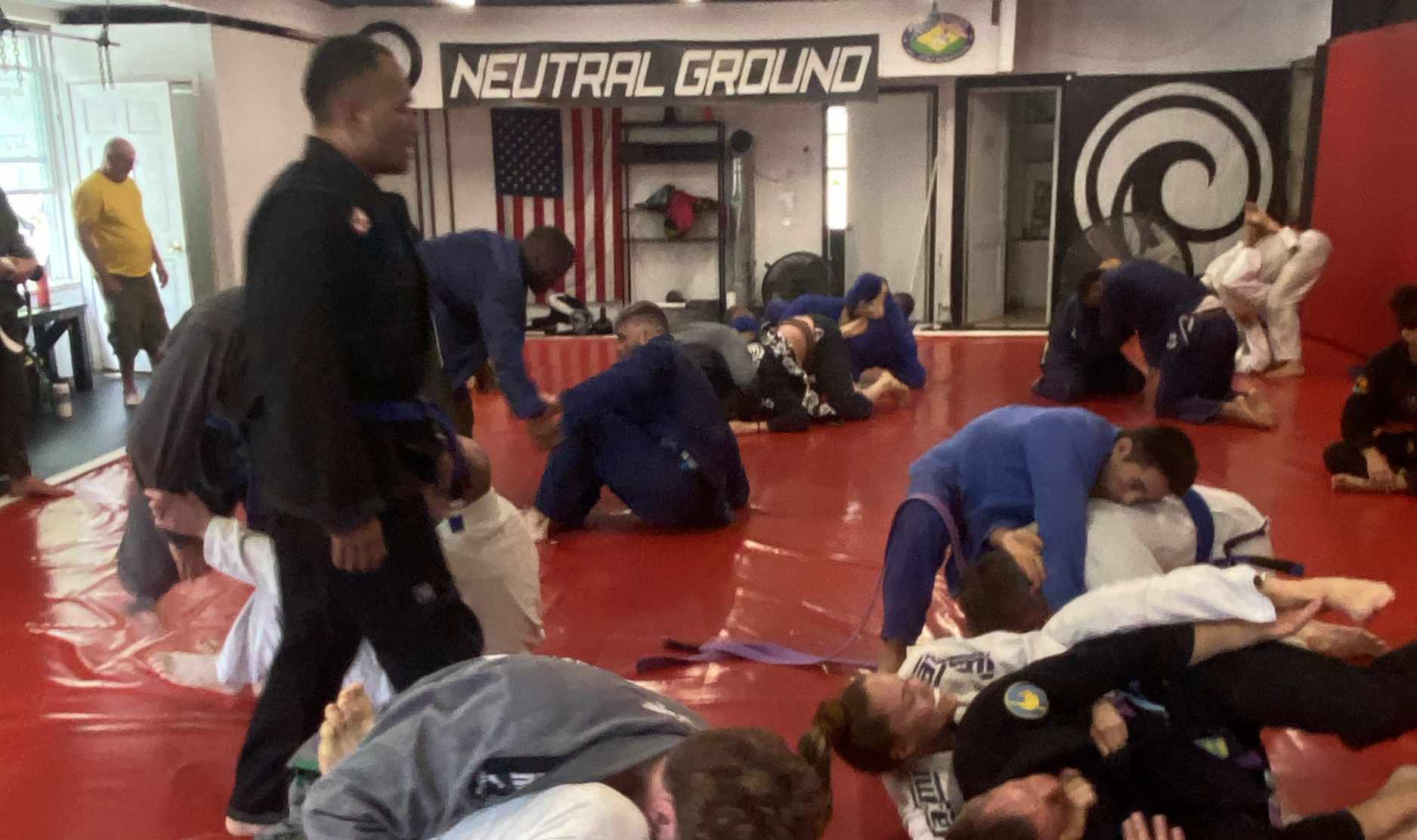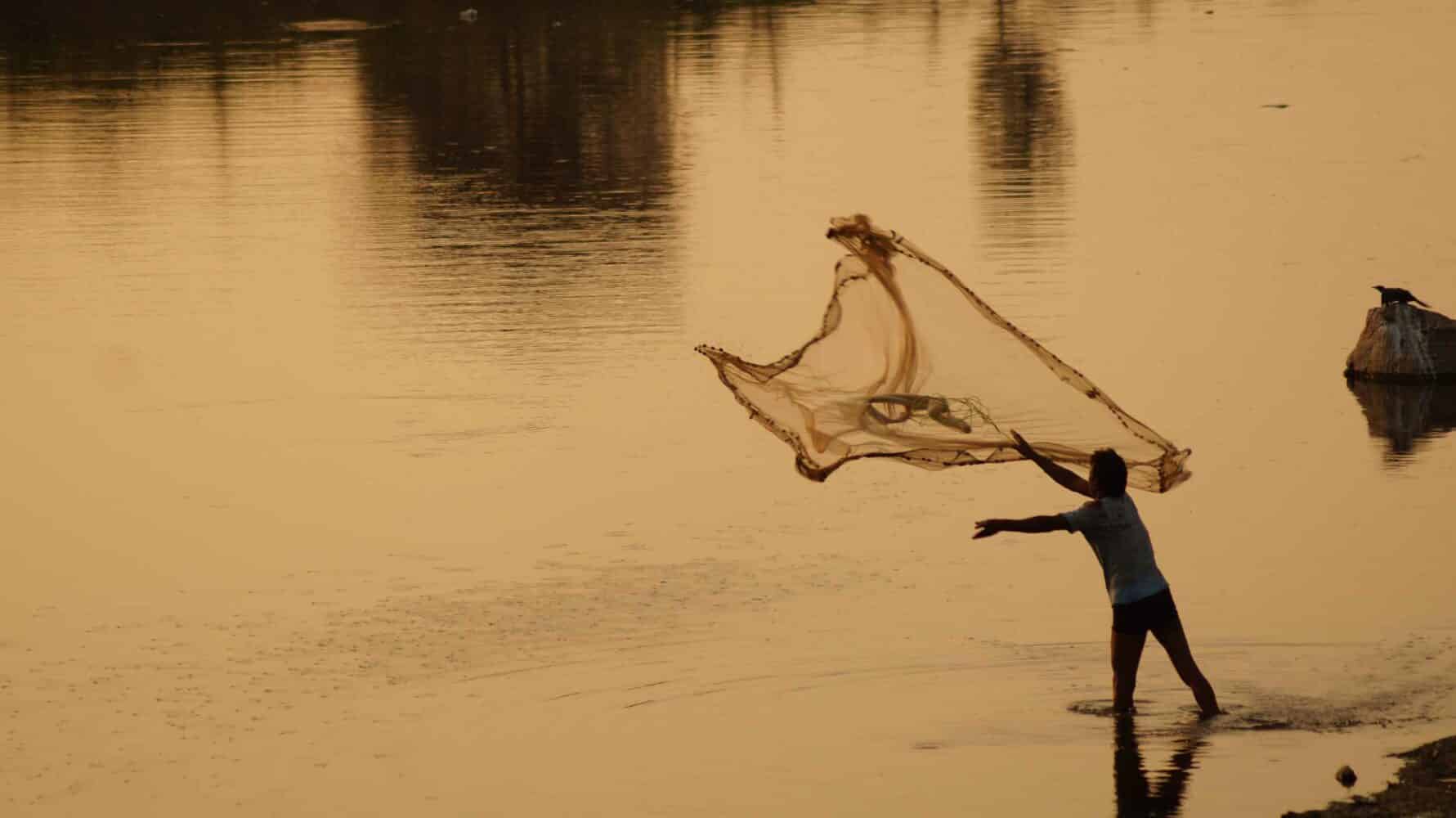When learning a new movement, the first step in its mastery is seeing what cue would invite it. We practice it with a partner; when they do X, we do Y.
The next major goal is to actually get it to work during live rolling. We either impose, wait for, or invite the cue so we can take our shot. Three tactics to capitalize on the cue when it appears.
Imposing the cue to appear, from wherever, often muscling through some smaller partner, sprinkled with grinding and slicing elbows. This usually happens when we absolutely fall in love with the new move at first sight. We’ll do what it takes to get it, even if it takes a little extra effort to make that cue show itself. It’s usually jerky, uncomfortable to watch, and increases chances for injury. We’ll eventually get it, but that might be it, and may lose some enthusiasm from others to train with us as we do.
Forcing their arm away from their body, pulling with our own to hit that armbar from mount.
Forcing a cue is like spearing a fish, whether it hits or not, it causes all nearby techniques to escape, as other fish scatter.
Waiting for the cue to show up so we can finally practice it in live rolling. This is great for beginners. We just roll as usual. There’s already more than enough to worry about just being in the scramble. But we keep our radar on for that cue for the new move to pop up so we can practice it when it does. Bobber goes down and we set the hook. Whether we see the cue or not, or get it to work or not, we just keep getting the mat time in, and that’s most important.
Waiting for them to bench press us off of the mounted position to give an armbar cue.
Even the fanciest lure still requires the fish to bite. Be patient in the waiting game, watch for the cue nibble, and keep yourself moving until it does.
Inviting the cue to present itself naturally. This requires more experience because we need other tools in our belt. We observe, get creative, and manipulate the other parts of the game leading up to and following that specific window of opportunity. We use the positions and movements we’re already familiar with to see how we can get them to react. Eventually one or more of their reactions are the cue we were fishing for.
Inviting that same mounted armbar cue by first attempting a convincing x-choke that convinces them to raise their arm in defense and the cue appears literally on your lap. Inviting a technique lays a net, allowing you to not only capture your intended technique but also it’s food and predator, prequel and sequel.
All three will get us there.
We don’t recommend using the imposing strategy, but it’s a most common learning stage, mostly in the beginnings of BJJ, but is also seen in experienced grapplers with a temporarily overly narrowed focus. Newer grapplers have a lot of anxiety and self-given pressure to not suck To get anything to “work” at all is a success. But experienced grapplers need the reminder as well when experimenting with new movements, or detangling ego weeds that have been ignored in our growth. Forcing a technique tunnels our focus causing us to miss connecting technical opportunities. It stunts our growth at any level of BJJ, but it does appear throughout.
The waiting strategy is great for beginners because we seldom have other options. Experienced grapplers also do this, polish what we know, experiment along the way, and keep the radar on for one (or more) of these desired cues to pop up.
Inviting strategy is the place to live. When we spend enough time waiting for a cue (with the waiting strategy) we also experience all the prequels and sequels to it, whether we notice them or not. What makes them bite or flee. As we learn more of these cues and patiently wait for them, each gets us closer to the next. We notice that the prequel to a new movement is the sequel of another. As this is repeated as the spaces fill in, we notice the best way to receive the desired cue is in your teammates’ response to a previous movement. While they are cleaning up their response to the first defense, we’ll be noticing that response as our cue for the next attack.
Focusing more on the prequels and sequels to whatever move we’re working on is two-fold. First, we’ll have more chances to practice the move as we use more options to have it presented. Second, our transition into and out of the move adds several more connections to smooth out our game, whether the desired movement succeeds or not. Our new movement will already have branches and roots before we ever get it to work! Instead of learning one move at a time in isolation, we’re better learning how they’re connected as well.
This is true for beginner and advanced training, but for the advanced we sometimes need that extra reminder to connect the techs for flow, but also to learn them faster. We’re often tempted to learn some obscure and exciting new movement and go right for it, training it in isolation. But this puts you in the waiting or forcing phase if you don’t intentionally study it’s connection to what you already know. The effects are compounded this way, in quicker time to achieve intended results, and in the flow between techniques. We also develop the exit strategy after the attempted move, successful or not. And this makes it easier to not get stuck afterwards, especially after a failed attempt. The combination of mastering the prequel and the sequel to the movement gives us more chances of seeing the cue, and mastering our response.
To conclude:
Imposing is weak, at most offering only temporary “success” while wasting energy and partners, and has us swimming upstream. We fish with a spear.
Waiting works, especially for things outside our control, we just need our eyes open for it. It requires presence and patience. We fish with bait.
Inviting zooms us out, to view the technique from afar with it’s connection to the whole. We fish with a net.Here’s to the force multiplier of connection through technical invitation, and fishing with a net.
Here’s to the force multiplier of connection through technical invitation, and fishing with a net.

